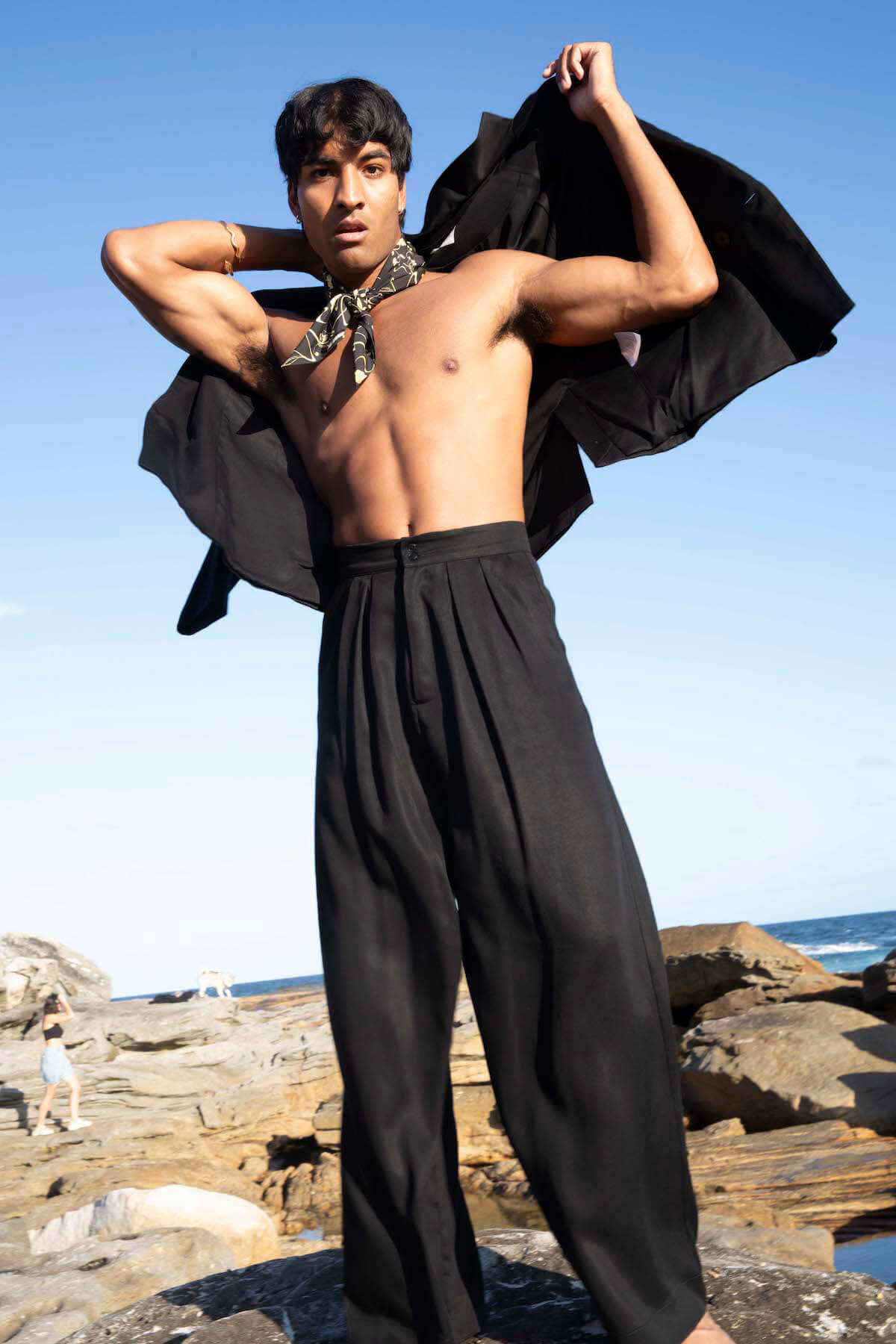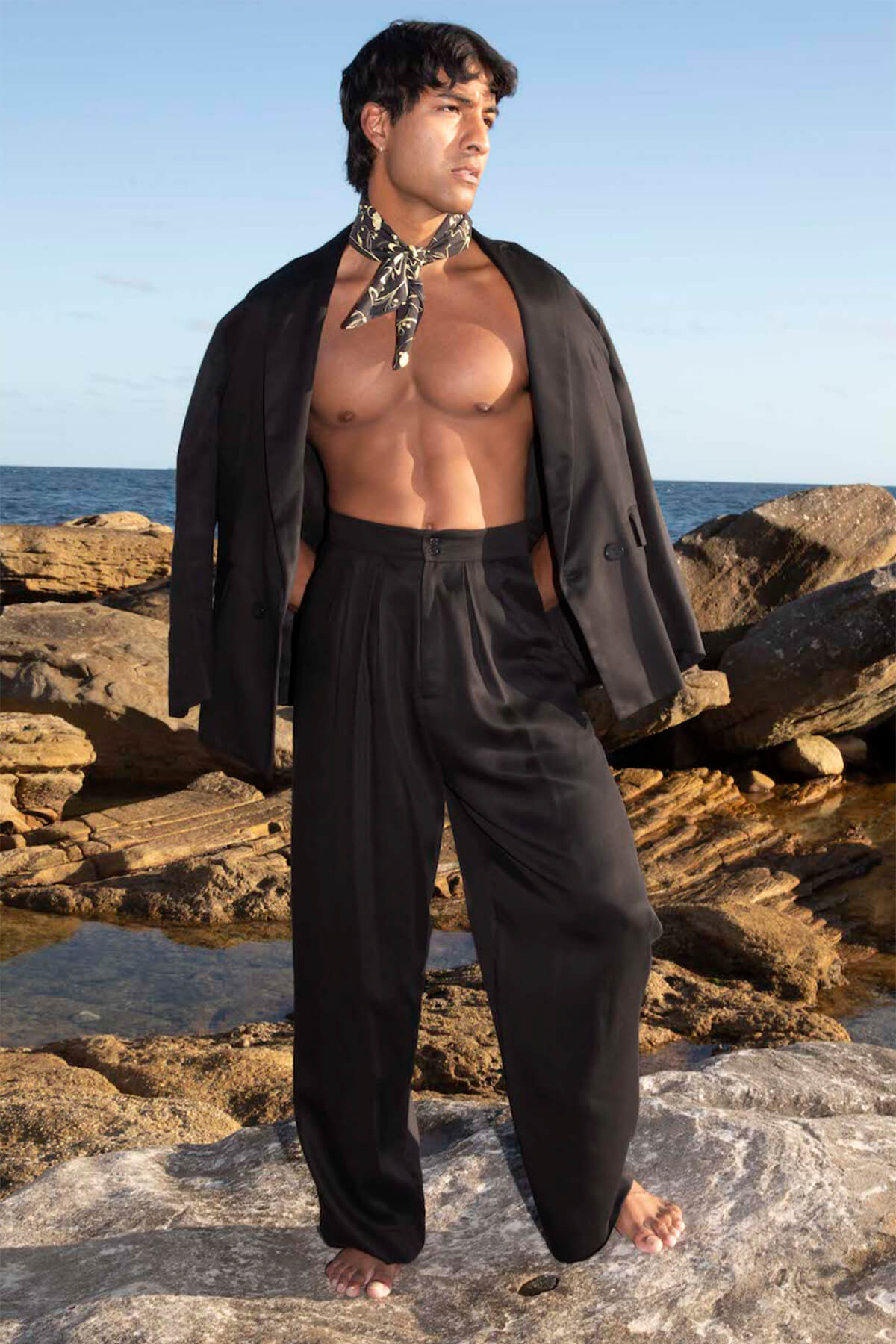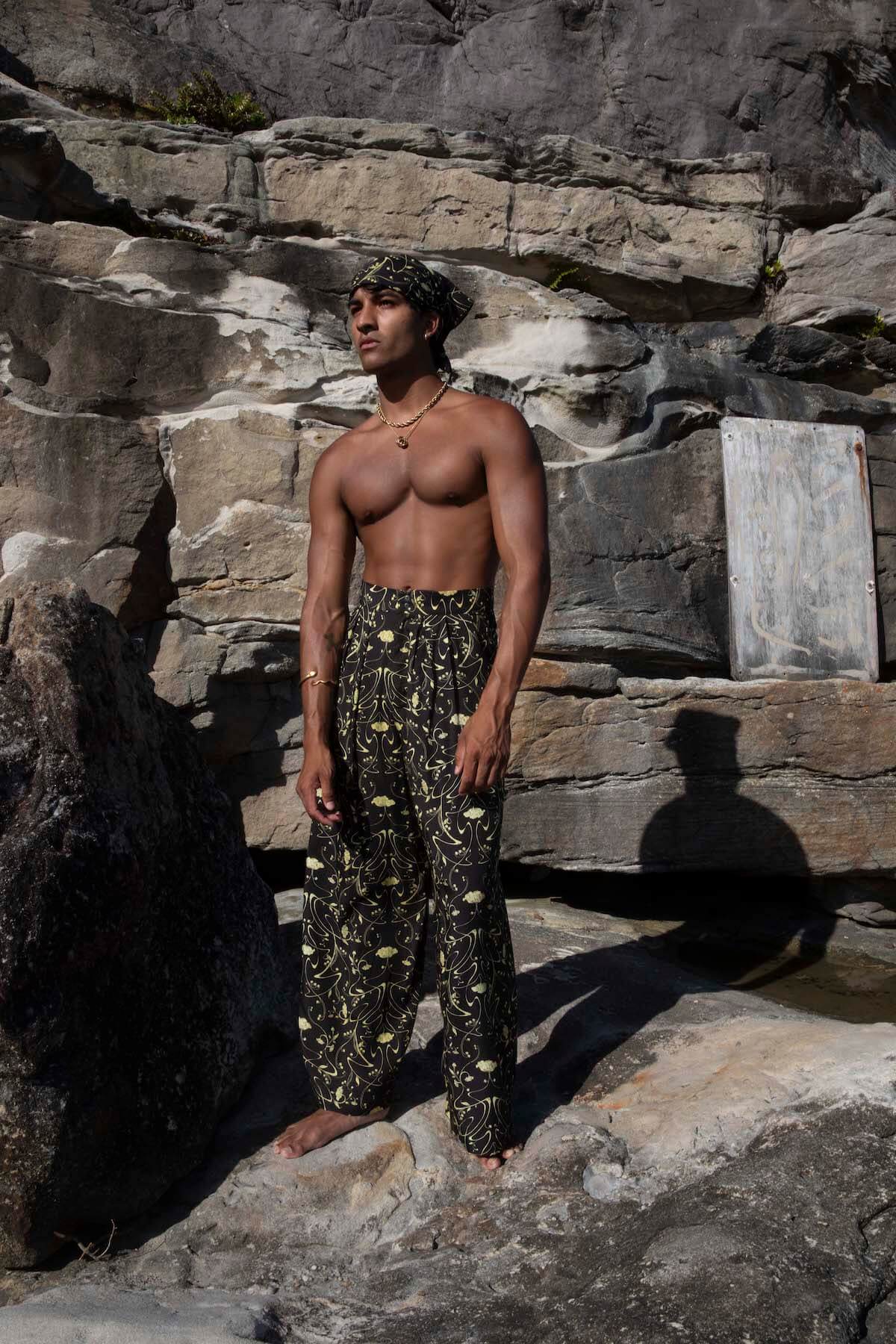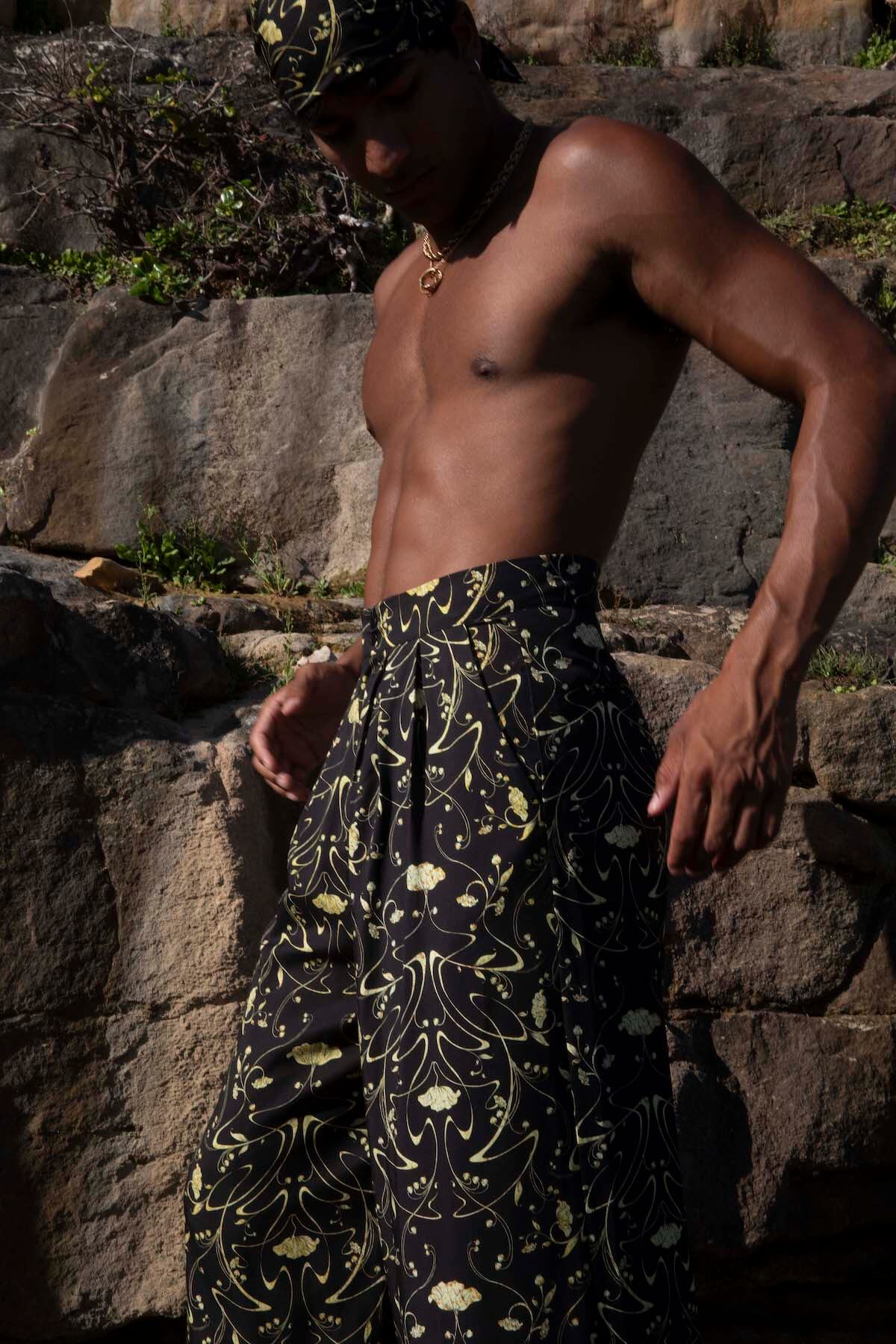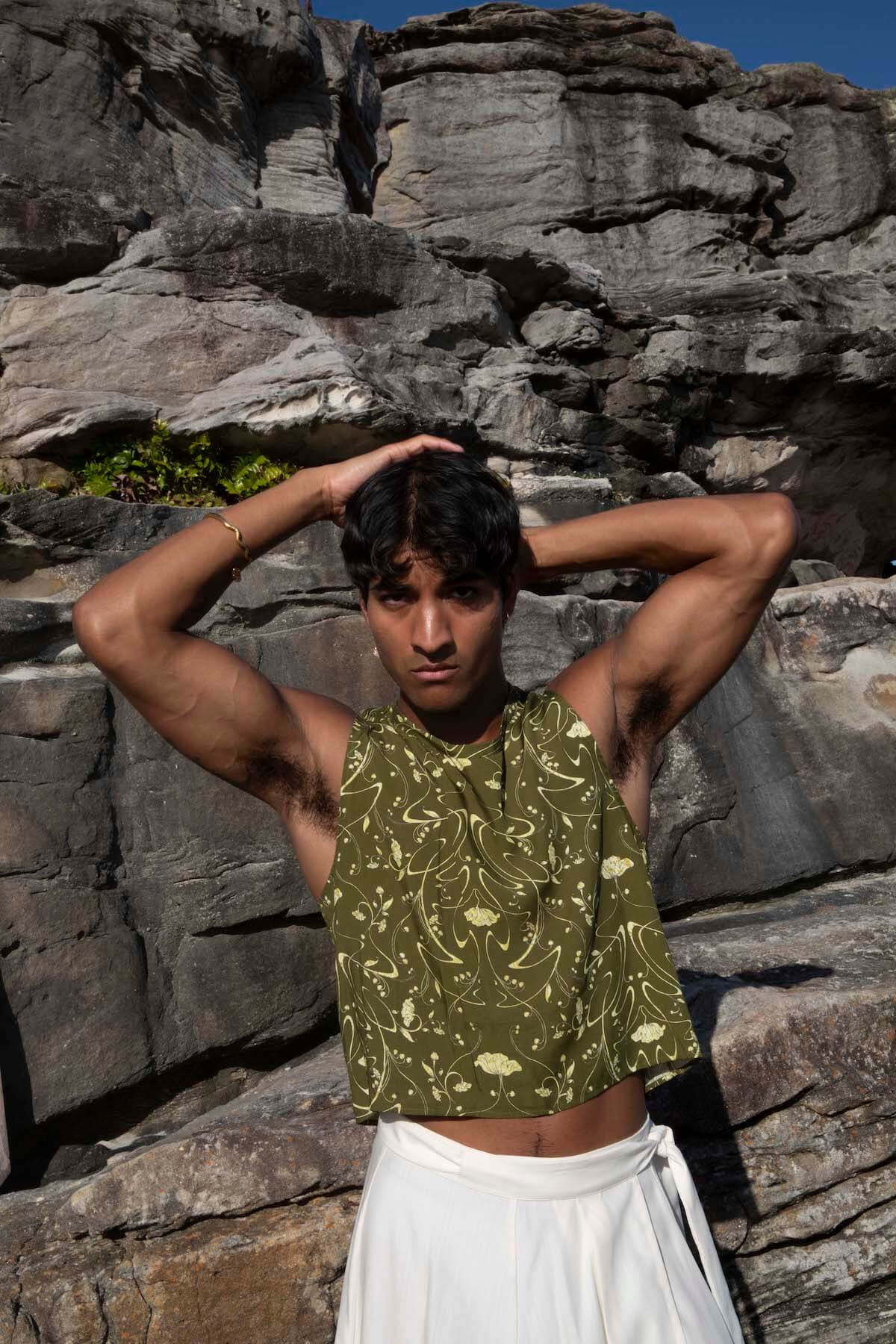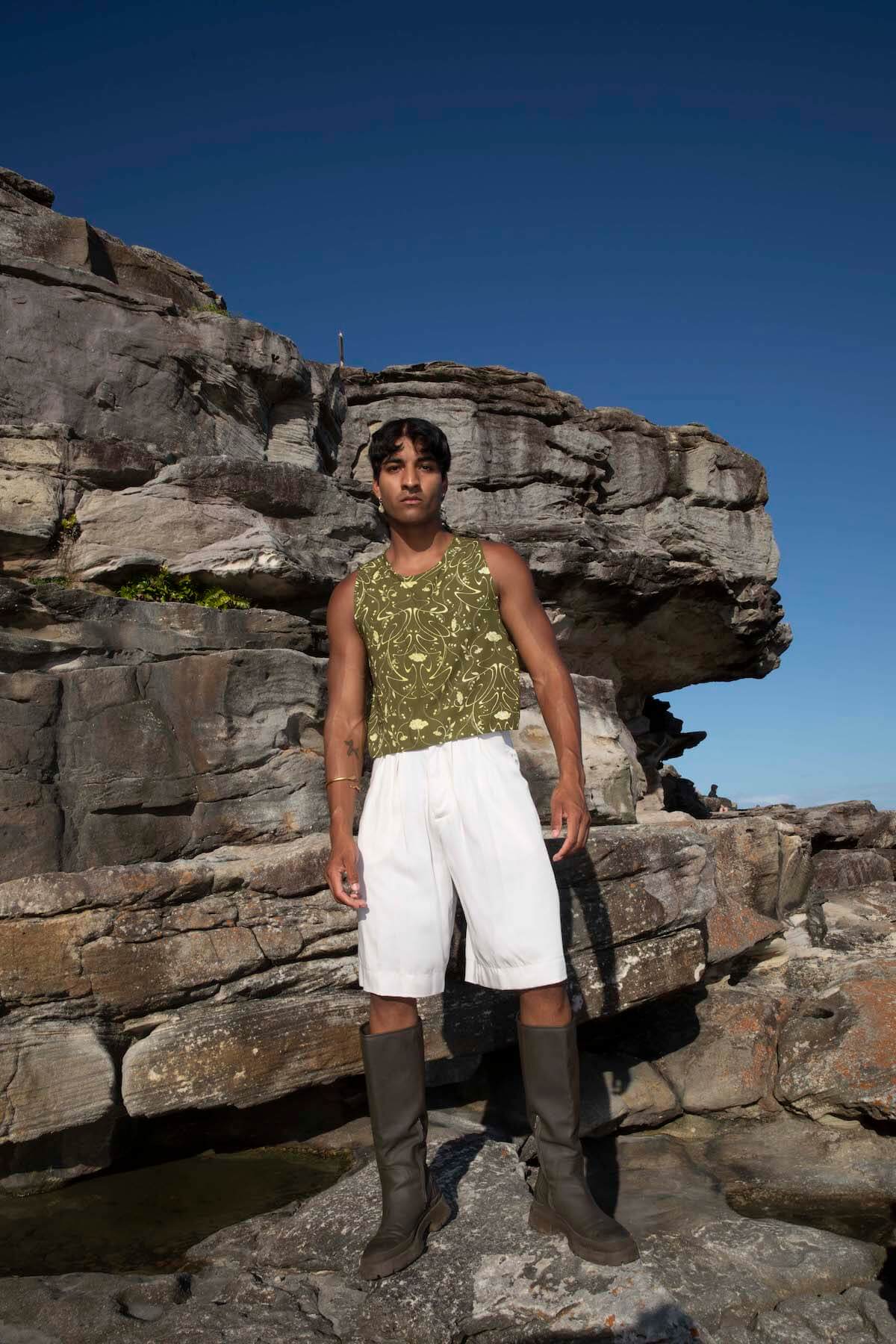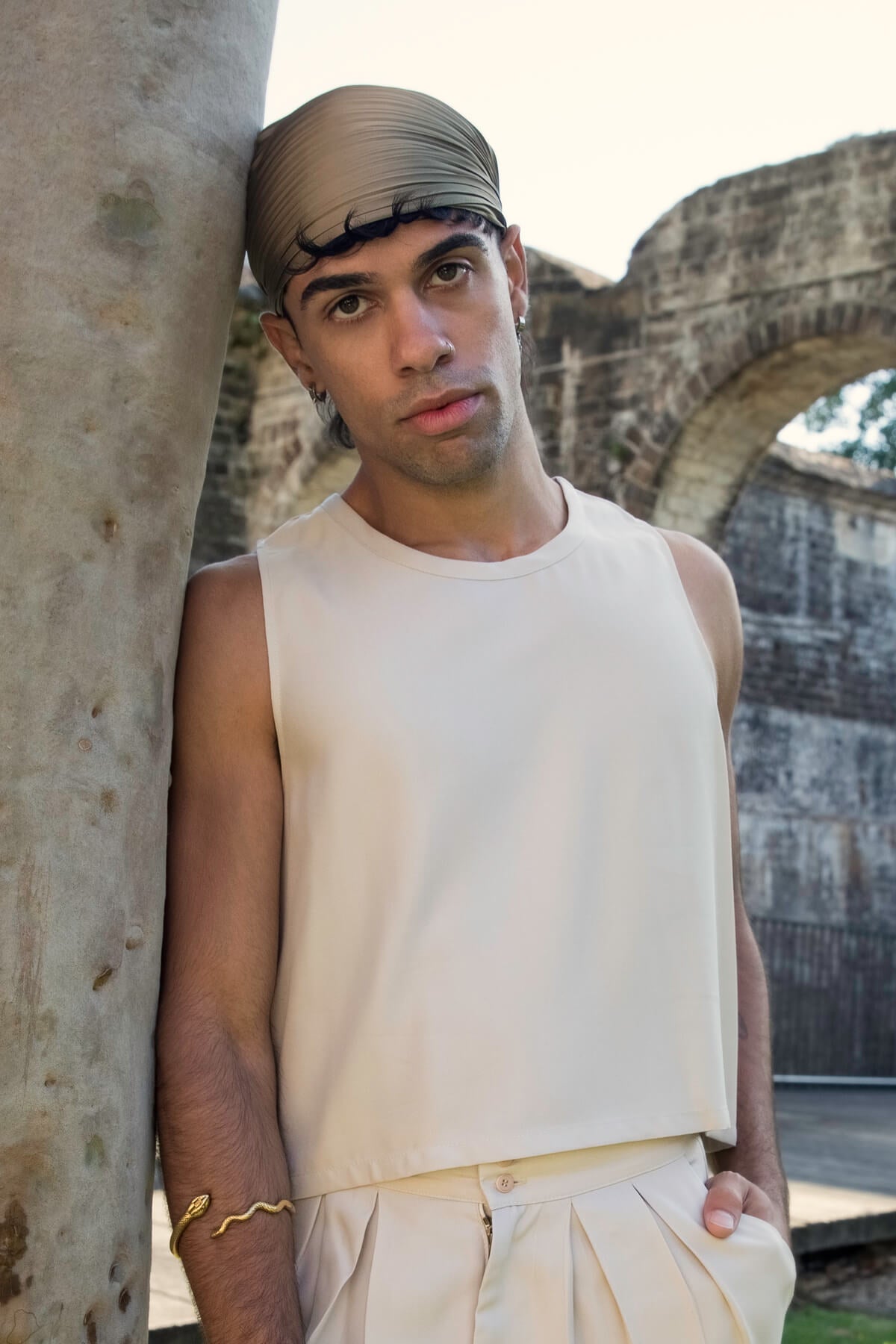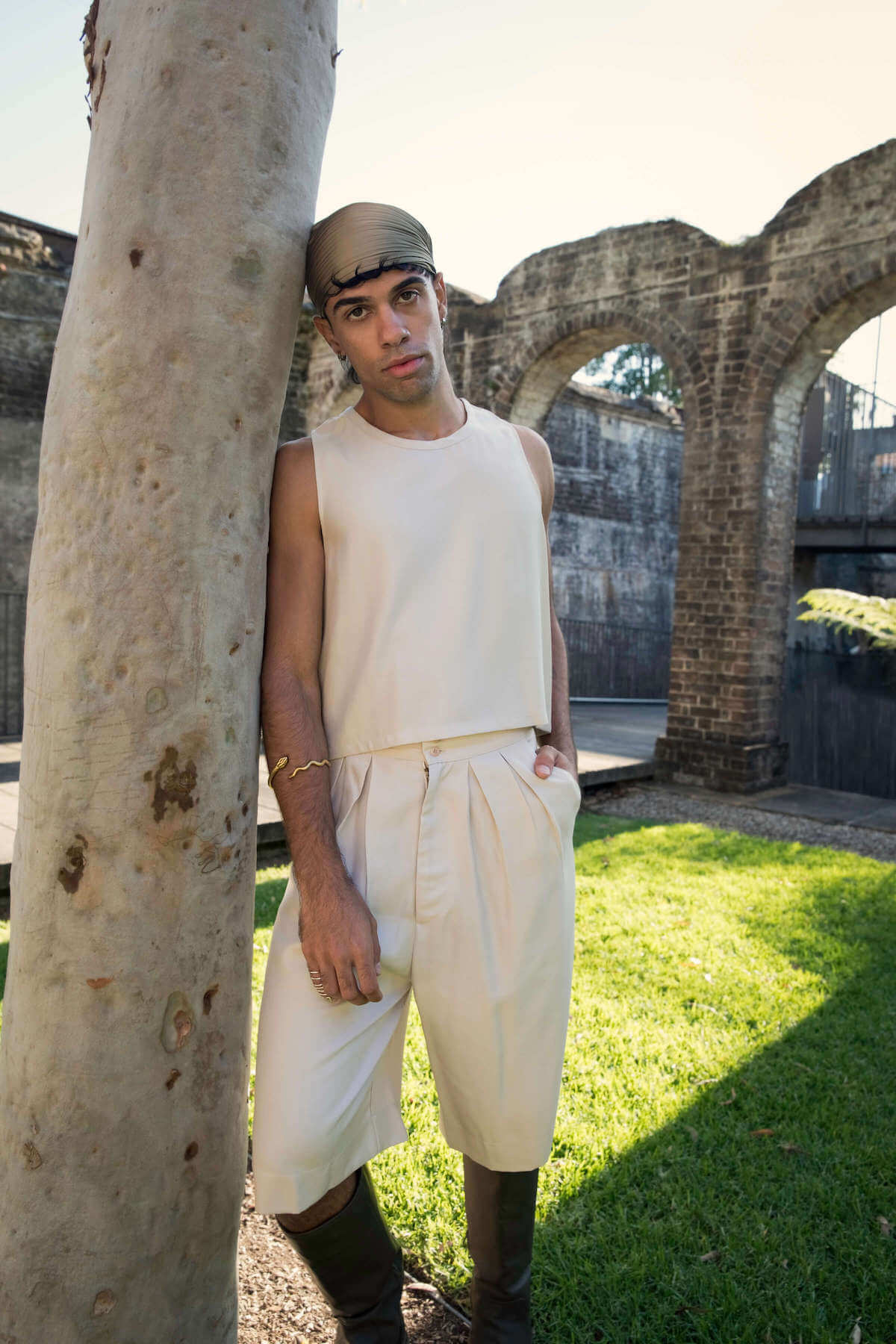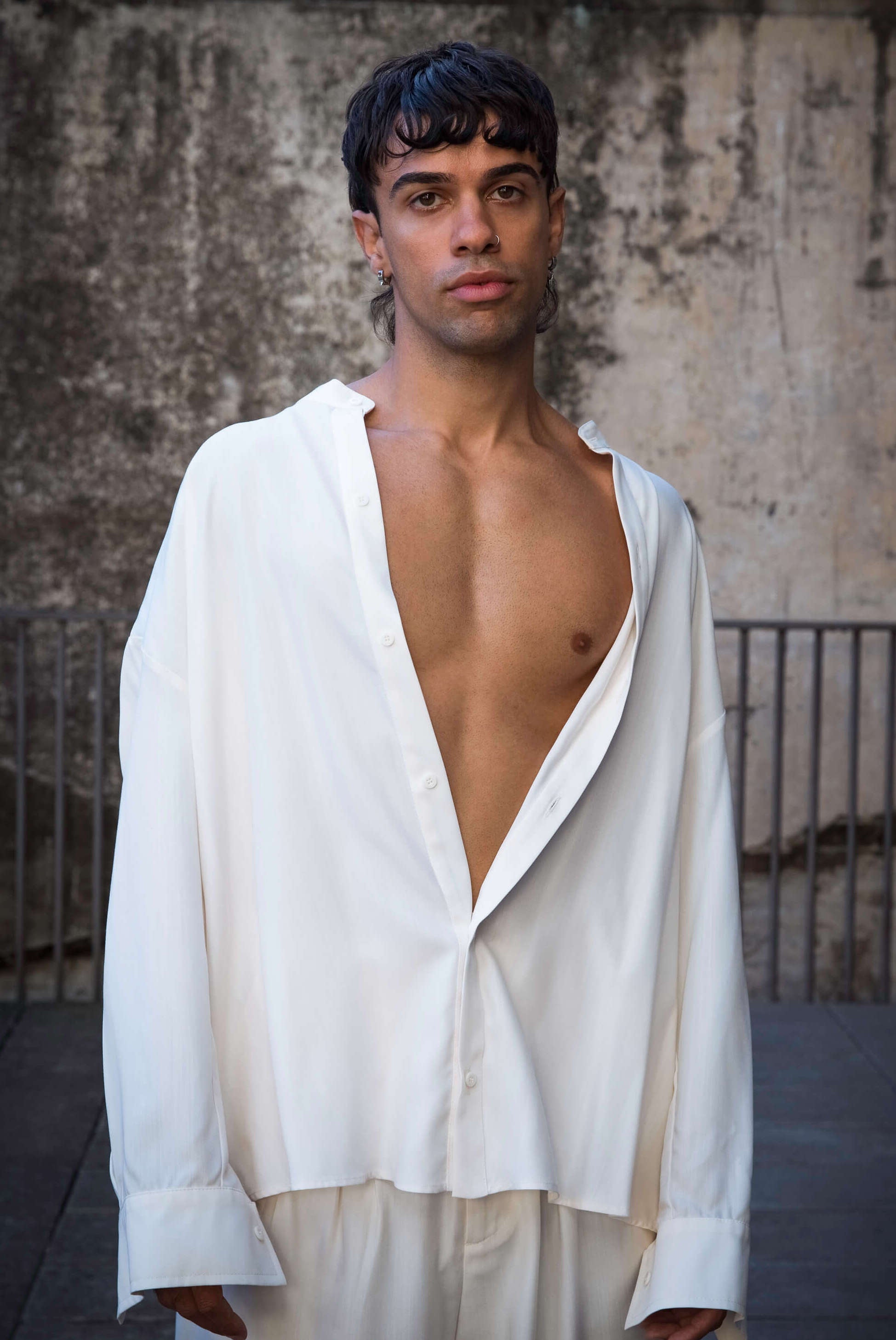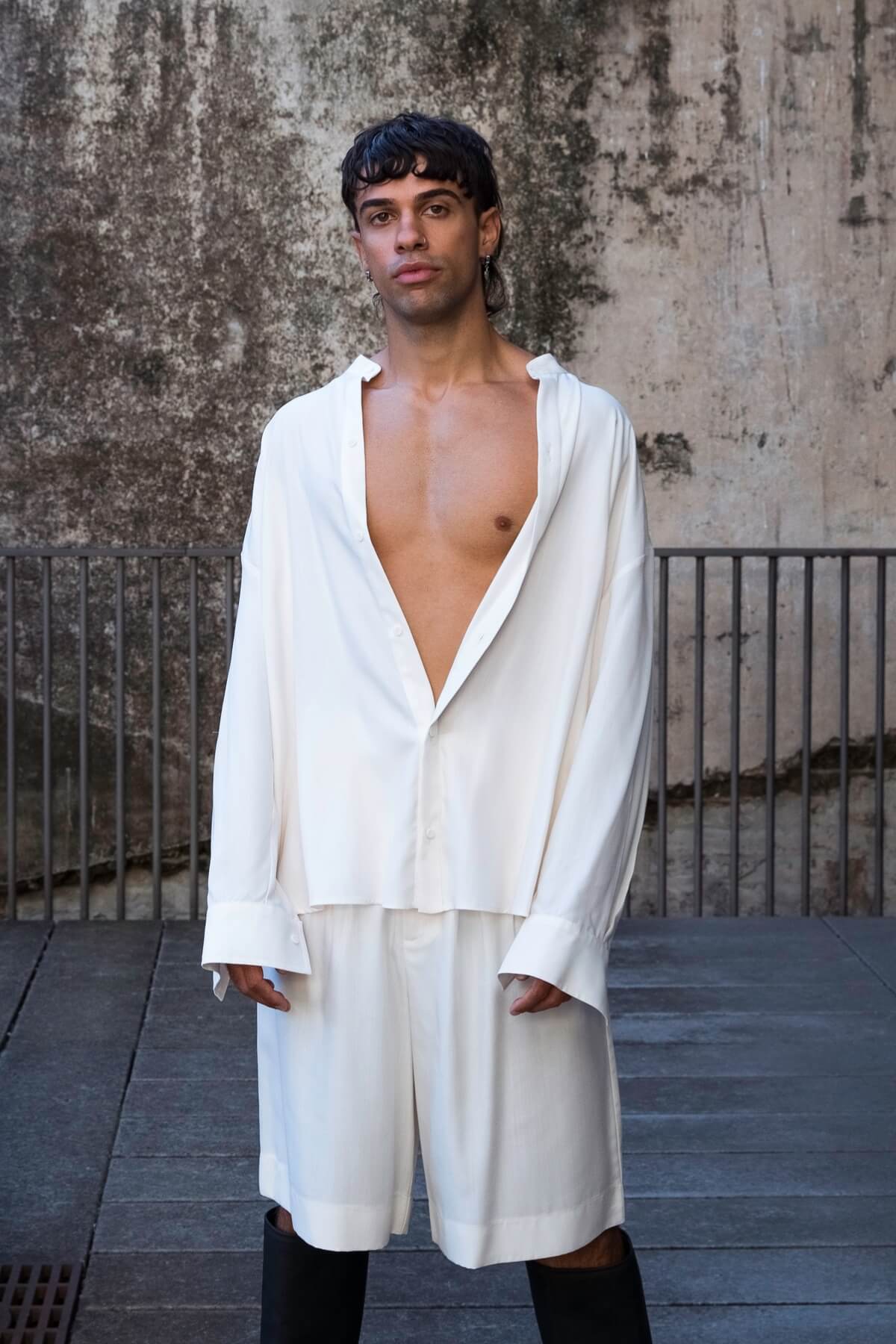Frequently Asked Questions
Shopping
Can I try on the collection before I buy?
For anyone in Sydney, our studio in Surry Hills is open between 8am-6pm for in-person fittings.
Please contact us to schedule a time.
We also offer free shipping, exchanges and returns (including postage for size exchanges) in Australia.
How do I know my size?
We understand that every body is different so for specific garment measurements or more detailed information, please reach out to us.
However, our size guide is applicable to all garments but please be mindful that measurements may vary slightly across styles.
(Measurements listed refer to the body not the garment itself)
How much is delivery?
Standard delivery within Australia is free for all orders.
We also offer express / same-day options.
- Express Delivery: 1-2 Business Days* ($15)
- Same Day Delivery: Within 10km of Sydney CBD ($20)
- Enjoy free Express / Same Day Delivery for all AUS orders over $300 AUD.
*Please allow a further 2-4 business days for deliveries to regional areas and Western Australia.
Do you ship internationally?
We offer international shipping for a flat rate of $30 AUD.
($30 AUD = approx. £16.00 / €18.25 / $20 USD)
*Orders take 6-10 Business Days to arrive.
*Free international shipping applies to all orders over $300 AUD.
*Express International is available for $60 AUD.
*Please note all transactions are processed in Australian Dollars (AUD). Other rates shown are approximate and based on today's bank rate.
How do I track my order?
Once your order is dispatched, you will receive an email that will include your tracking number. This will allow you to track your order via the relevant shipping company.
What is your exchange and return policy?
Exchanges & returns are always free at The Glade. We will also cover the shipping costs for faulty/incorrect orders.
- Items must be exchanged with 14 days of delivery.
- Items must be in original, saleable condition: they must not be worn, damaged, altered or washed.
Returns are available within 14 days of delivery.
- Items must be returned within 14 days of delivery.
- Items must be in original, saleable condition: it must not be worn, damaged, altered or washed.
- The Glade will cover the shipping costs for returns if the order is faulty or incorrect.
- We do not accept returns on products purchased on markdown/sale.
- Orders won’t be reimbursed the original cost of shipping, customs duties or taxes unless the order was faulty or incorrect.
If you believe you have received a faulty item or incorrect order, please send images of the item, order number and contact details to info@theglade.com.au
Can I change or amend my order once placed?
If you notice something is incorrect with your order after it has been placed, please contact us immediately.
We will do our best to change or amend the order, however we are unable to make any changes once your order has been dispatched.
Sustainability & Circularity
Circularity - What does it mean?
Currently, most industries work within a linear economy.
We take, we make, we throw away.
Circularity however, is a model of production where the waste and wastage you would normally see is designed back into the system, creating a closed-loop (or circular) model.
In turning that unsustainable, straight line method of production into a circle, we use what would have been thrown away and create something new again.
In a perfectly circular model, there would be no need for new or virgin raw material, everything we need to create would be in production already - all materials could and would be endlessly reused and recycled, eliminating waste in the process.
What is the difference between circularity and recycling?
Recycling differs from a circular economy in that most materials can only be recycled a few times before their quality declines and they can no longer be used.
While both have removing waste as a goal, recycling is trapped within the last stage of that straight line production model.
A circular economy aims to keep products and materials in use without degrading their quality or downcycling into lower valued products.
Take a recyclable water bottle for example. The value of recycled PET, the plastic used (also known as rPet) diminishes with each and every version, eventually needing virgin material added to increase its strength back to its original.
Circular design considers how a product will be made, used and ultimately disposed of, rather than as a second or afterthought.
However, a circular model is more than just a non-linear approach focusing on no waste. It also ensures that the ‘take’ and ‘make’ parts; the extraction of virgin resources and the turning of them into products, are also sustainable and renewable.
A circular system considers materials and production thoughtfully, emphasising the value of utilising a product right to the end, then going one step further and repurposing it into something else.
How does this relate to fashion?
Trends, cycles and short-term styles have contributed to the rise of fast-fashion and most people still see clothes as one-wear, quick to tear and easily disposable.
Fashion is the second most polluting industry in the world; producing unfathomable amounts of waste, run-off and greenhouse gases every year.
On top of this, the system as it stands is steeped in exploitative and in many cases deadly human rights abuses, horrendous working conditions for the most vulnerable of workers, pay below the poverty line, not to mention near-irreparable farming and agricultural practices.
Why is circularity important?
Circularity is important because it is designed to stop these horrendous practices mentioned above.
Cradle2Cradle provides a standardised approach to material circularity, assessing whether products have been suitably designed and made with the circular economy in mind.
They cover critical categories of material health, material reutilisation, renewable energy and carbon management, water stewardship and social fairness.
In supporting circularity, you are supporting;
- the regeneration of natural systems, agriculture & farming
- fair trade practices & a transparent supply chain
- responsible manufacturing
- reduction of greenhouse gas emissions
- safer, less toxic products for you, the consumer
How does The Glade incorporate circular practices?
Circularity in practice incorporates considered design, responsible manufacturing and product stewardship over the use, repair and end-of-life of every garment.
We design with the end in mind by considering the questions below:
- Can we make this a long-term, sustaining product? Is the design as classic, long-lasting and functional as possible?
- Are we able to use recycled or renewable materials? How are we going to re-use these materials, how easy is it to disassemble and repurpose?
- Who is making our garment? Are they being paid a fair and living wage? Can we even tell...is this a transparent and open supply chain?
- What does the end-of-life look like? If the product can no longer be used wholly, re-used for its parts or recycled back into raw materials, can it return to nature?
Here at The Glade,
- Every piece is sewn by our exceptional makers here in Sydney, Australia in support of artisanal quality and local, ethical supply chains, in turn keeping our environmental footprint small.
- We produce in limited quantities to reduce waste and maintain our quality craftsmanship.
- We only use 100% single-fibre fabrics. These are easier to care for, recycle and regenerate.
- We ensure our hardware (buttons, zippers) and trims are easily removable and can be recovered for reuse.
Why is TENCEL™ so good for the environment?
The enviromental impact of TENCEL™ is mitigated mostly from the way it is sourced, produced & worn, along with its end-of-life biodegrability, integrating the fabric back into the Earth and the biological cycles of nature.
- Made from the wood-pulp of sustainably managed forests, the fabric is derived from a renewable and regenerative source, meaning the raw material will continue to regrow.
- The manufacturing itself is circular and a closed-loop, with water continuously recycled and 99.8% of solvents used re-integrated into the bio-refineries.
- As a fabric, it is naturally breathable and anti-microbial, meaning it requires less washing. This saves water and preserves garment quality, in turn enhancing its durability and longevity - two key concepts of circular design.
- Finally, as a cellulose-based fibre it is naturally biodegradable, able to return to Earth and help regenerate the forests it was originally sourced from.
It would a good point to mention that circularity systems can be separated into both technical and biological cycles.
In the technical cycle, products and materials are kept in circulation through processes such as reuse, repair, remanufacture and recycling, while in the biological cycle, the nutrients from biodegradable materials are returned to the Earth to regenerate nature.
So, while TENCEL™ is technically sourced from virgin or raw material, its renewable and regenerative nature creates a continuous flow of material and makes it one of the most sustainable fabrics available.
